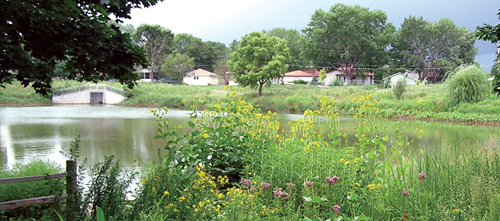
Introduction
This website is an online manual that has been developed to help users assess the performance of, and schedule maintenance for, stormwater treatment practices. It is intended as a supplement to the Minnesota Stormwater Manual, which provides guidance for the design and installation of stormwater treatment practices.
This online manual provides a standardized methodology for the assessment and maintenance of stormwater treatment practices. It creates guidelines for assessing performance, reporting results, and scheduling maintenance which allows for comparison across geography, stormwater treatment practice type, season, and watershed.
Existing and developing communities are installing a wide variety of urban stormwater treatment practices in order to protect or rehabilitate receiving waters. These efforts incur costs while their environmental effectiveness is still in question, and the many variables involved (e.g., seasons, geology, topography, storm events, etc.) have made it historically difficult to compare results (Weiss et al. 2007). After assessment results are compared with stormwater management goals, users are able to proceed more effectively with their maintenance actions. To meet the needs of existing and developing communities, "Stormwater Treatment: Assessment and Maintenance" provides guidance on:
- The steps necessary to develop an assessment program including methods to consider before establishing a monitoring program
- Four levels of assessment ranging from visual inspection to monitoring;
- More accurate methods for flow measurement in stormwater conveyance systems;
- Advanced sampling methodologies that will help minimize typical sources of bias;
- Maintenance schedules and recommendations for appropriate action;
- Data on maintenance of stormwater treatment practices in the State of Minnesota;
- Data analyses and standardized visual inspection checklists;
The intended audience for this online manual is diverse including engineers and planners, consultants, watershed districts, municipal staff, natural resource managers and many others. Therefore, a series of case studies are also included to provide users with practical examples.
This online manual was created by the collaborative efforts of engineers, researchers, faculty, consultants, watershed districts and many others with funding provided by the Minnesota Pollution Control Agency. Funding for partner projects was provided by several organizations as listed in the About this Manual section.
For questions about this manual, please contact John Gulliver.
Keywords: Stormwater, Storm Water, Best Management Practices, BMPs, Assessment, Treatment, Monitoring, Testing, Maintenance, Operation and Maintenance, O&M, Low Impact Development (LID) Practices, Green Infrastructure, Visual Inspection, Filtration, Filtering, Sand Filter, Infiltration Basin, Trench, Permeable Pavements, Porous Pavements, Sedimentation, Settling, Wet Pond, Dry Pond, Underground Sedimentation, Proprietary Devices, Hydrodynamic Separators, Bioretention, Bio-Enhanced Practices, Rain Gardens, Constructed Wetlands, Filter Strips, Swales.
To begin reading the online manual, start with Background.
